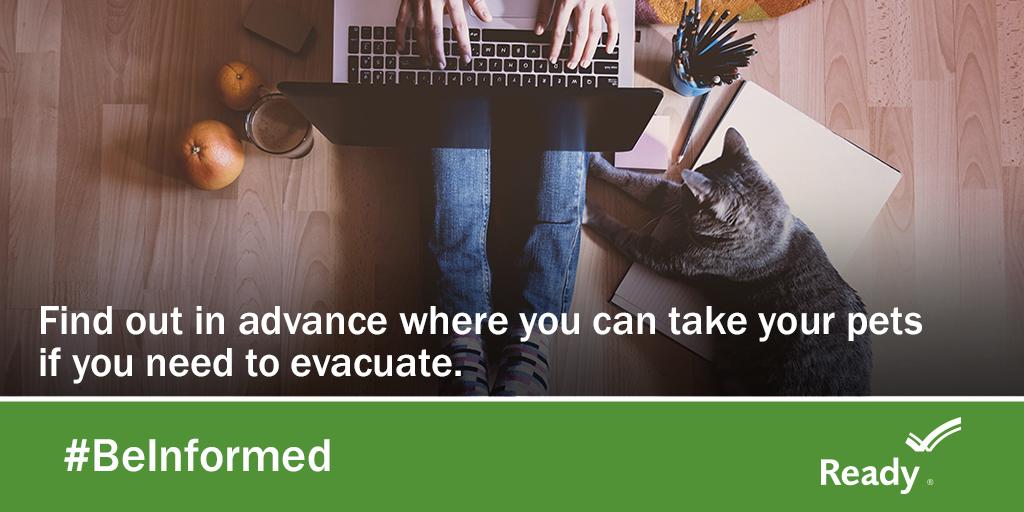Sixty-three percent of Americans have a feline friend, canine companion, or other type of pet, according to the American Veterinary Medical Association. When disaster strikes, pets are often lost or have no place to stay if owners must move to a shelter or a temporary home that cannot accommodate them.
Planning and preparing our family and pets for the unexpected can provide a huge sense of relief now – and perhaps save lives later. Being prepared for an emergency means thinking about the needs of all your family members, including your pets.
During a disaster, what’s good for you is good for your pet. The tips in this article will help you plan ahead.
TIP #1: Buddy System
Create a buddy system in case you’re not home. Ask a trusted neighbor to check on your animals.
Keep in mind that pets might not be allowed inside public shelters. Find pet-friendly evacuation destinations for you and your pet, such as hotels, boarding facilities, animal hospitals or out-of-town friends or relatives along your evacuation route.
TIP #2: Evacuation Drills
If you need to evacuate, take your pets with you. If ordered to evacuate, you may assume that you’ll be able to return home in a couple of hours. In reality, it might be several days or even weeks before you’re allowed to return. What will happen to your pet if you leave him behind?
Practice evacuating with your pet to reduce stress in the event of an emergency.
TIP #3: Emergency Kit
Pets need their own emergency supply kit. Download a supply list at http://bit.ly/2Q0s1Xw
Here are basics to include in your pet’s kit:
- Food. At least a three-day supply in an airtight, waterproof container.
- Water. At least three days of water specifically for your pets.
- Medicines and medical records. Keep an extra supply of meds your pet takes regularly in a waterproof container.
- Important documents. Registration information, adoption papers and vaccination documents. Talk to your veterinarian about microchipping and enrolling your pet in a recovery database.
- First aid kit. Cotton bandage rolls, bandage tape and scissors; antibiotic ointment; flea and tick prevention; latex gloves, isopropyl alcohol and saline solution. Including a pet first aid reference book is a good idea too.
- Collar or harness with ID tag, rabies tag and a leash.
- Crate or pet carrier. Have a sturdy, safe crate or carrier in case you need to evacuate. The carrier should be large enough for your pet to stand, turn around and lie down.
- Pet litter and litter box if appropriate, newspapers, paper towels, plastic trash bags and household chlorine bleach.
- A picture of you and your pet together. If you become separated, a picture of you and your pet together will help you document ownership and allow others to assist you. Add species, breed, age, sex, color and distinguishing characteristics.
- Familiar items. Familiar items, such as treats, toys and bedding can help reduce stress for your pet.
TIP #4: Microchip Your Pet
In the unhappy event that you and your pet get separated, help your pet get home to you. Microchip your pet, so you can easily be reunited after a disaster.
Atlantic Veterinary Hospital carries the 15-digit, universal ResQ microchips. These microchips can be placed under the skin on the back of the neck during a quick nurse visit. Your contact information can be quickly and easily updated as needed online any time at no additional cost.
TIP #5: Selfies
Take a selfie of you and your pet together and put it in your emergency kit. If you become separated, a picture of you and your pet together will help you document ownership and allow others to assist you. Add species, breed, age, sex, color and distinguishing characteristics.
Video Tips
Here’s an instructional video with more tips for proactive pet emergency preparedness.
Photo Credits: FEMA/Ready Graphic




